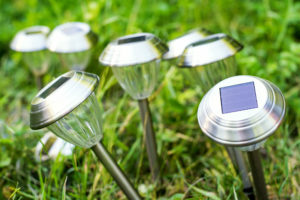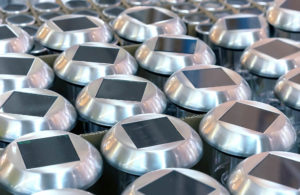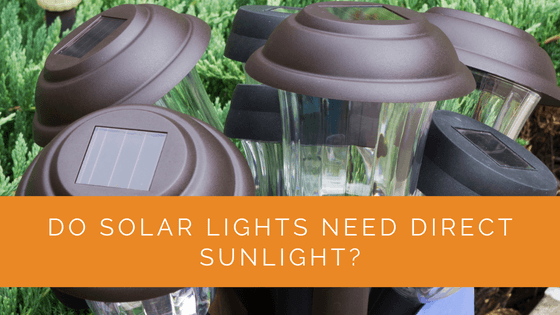Are you interested in harnessing the sun’s power to illuminate your home while contributing to a greener planet? Solar lights may be the perfect solution for you.
Solar lighting is gaining popularity as the world seeks sustainable energy solutions. As energy consumption trends shift, more and more households are turning to solar lights to reduce their dependence on traditional power sources. But how do solar lights work and require direct sunlight to function effectively? If you’re curious about the effectiveness of solar lights and whether they can operate in shaded areas, this article will provide you with the answers you need.
The Quick Answer
Solar lights work in the shade and don’t necessarily require direct sunlight to generate light. Though direct sunlight is the best and most effective method to charge solar panels, alternatives are also available.
Contents
- 1 Key Takeaways
- 2 How Do Solar Lights Work?
- 3 Reasons Why Solar Lights Aren’t Lasting Nightlong
- 4 How to Get More Sunlight to Charge Solar Panels?
- 5 Case Study: Enhancing Solar Light Efficiency in Shaded Environments
- 6 Expert Insights From Our Solar Panel Installers About Solar Lights and Sunlight
- 7 Our Expertise in Solar Lights
- 8 Concluding Thoughts
Key Takeaways
- Solar lights do not require direct sunlight; they can work in the shade or with indirect sunlight.
- Solar lights operate by harnessing energy from the sun through photovoltaic cells, storing it in batteries, and activating the lights at night.
- To optimise solar panel charging, keep panels clean, consider separate panel installation, use mirrors to redirect sunlight, deep charge batteries occasionally, and even utilise artificial lighting sources like incandescent bulbs or LED lights.
How Do Solar Lights Work?
When planning to install solar lights, the top priority is the place you should install them. Of course, you don’t want to ruin the aesthetics of your home. Chances are you want to place it in the shaded area. First, understand how solar panels work to know how much energy it needs to give optimum performance.
The following five steps below explain how solar panels work.
Panels Receive Energy from The Sun
During peak sun hours, the panels attached to the solar lights receive energy from the sun. The photovoltaic cells or the solar cells in the panel absorb the energy from the sunlight.
The Energy Gets Converted Into Electricity
The energy soaked by the photovoltaic cells creates an electrical charge. The charge starts moving in reaction to the electric field in the solar panel cells, ultimately generating electricity in the solar panel.
The Electric Power Charges the Batteries
The photovoltaic cells are directly wired to the solar battery. Once the electricity flows, the batteries get charged and store the electrical power. It ensures that when the sunlight is no longer available, the charge will power the solar lights.
The Batteries Get Activated at Night
Every solar light has a photoresistor that detects whether sunlight is available. When the photoresistor can’t spot daylight at sundown, the attached controller activates the batteries automatically.
The Lights Switch On
As the controller activates the batteries, the stored power gets released, and the light switches on.
A solar lighting device needs to receive direct sunlight for 4 to 10 hours to work at its optimum level. When fully charged, the outdoor lights can stay on all night long.

Reasons Why Solar Lights Aren’t Lasting Nightlong
Many people notice that their solar lights don’t work in winter. That’s more because of the sunlight it’s getting than the cold weather. A cloudy day means less visible sun and sunlight. Hence, the lights don’t get adequately charged.
However, visible sunlight is not the only reason behind the malfunctioning of your solar-powered lights. The other causes may include the following:
Water Buildup in the Circuit
Solar lights can work all year long in all weather conditions. However, frequent rains can make the solar panel wet. And sometimes, the excess water seeps into the circuit. The type of solar light you install affects durability, so check the details while purchasing your solar lights.
Batteries are Dead
Although solar lights use rechargeable batteries, they also have a limited life span. The batteries die eventually after a few years of use and don’t get recharged. It might be one of the reasons that your solar lights are not working.
If that’s the case, replace the batteries with new ones and watch your solar lights sparkle again.
Dirt in the Panel
Solar panels quickly accumulate dirt over time. It makes it difficult for the panels to capture solar energy. Remove the dirt from its surface as often as possible to ensure enough sunlight reaches the board.

How to Get More Sunlight to Charge Solar Panels?
You may think you can’t charge a solar panel in indirect sunlight or indoors. Since we are talking about solar lights, it should use solar power, as the name suggests, right? However, it’s not entirely true. You can always use Optimisers, Microinverters, or solar inverters if there are shading issues.
Here are some other ways that allow more sunlight to charge solar panels.
Clean the Solar Panels
Solar panels can work even with less sunlight if you keep them clean and remove grime from them frequently. In winter, snow can also block light, making it impossible for solar panels to harness solar energy. Keep the solar boards clean and tidy to make light work effectively.
For better results:
- Wipe the surface of the panel with a slightly wet microfiber cloth
- Ensure the cloth is clean, as it may cause streaks on the panel surface
- Avoid using detergent or soap if it is not essential
Install Separate Solar Panels
Another ingenious tip to get more sunlight and optimise solar lights’ charge is to use separate solar panels. Installing solar panels separately allows you to adjust their position to capture more sunlight.
You could change its position and maximise sunlight even if placed in a shady area.
Place Mirrors to Redirect Sunlight
Using mirrors to redirect sunlight is another effective way to get the most out of the sun in the winter. Mirrors help the panels receive light even if placed in the shade.
- Use mirrors double the size of panels to redirect more sunlight
- Place the mirrors in a diagonal position from the ground to reflect more sun rays
Deep Charge the Batteries
Switch off your solar light and let it charge for 72 hours straight. It’s a deep charge method that allows you to use and charge your solar batteries more effectively. Try this method once or twice a month to increase the battery life.
Use Artificial Lights
Yes, it’s true. As mentioned earlier in the article, you can use artificial lighting to charge your solar lights. An incandescent bulb can charge the lights properly. Place the solar panel underneath the bulb to charge it rapidly.
The closer the solar light is to the bulb, the faster it will charge.
Using LED Lights to Charge
You can even use LED flashlights to power the solar lights. When you don’t have access to the indoor lighting system in an emergency, you can use LED lights to charge the solar lighting panel successfully.
Case Study: Enhancing Solar Light Efficiency in Shaded Environments
Background
At Solar Panels Network, we were approached by a homeowner interested in utilising solar lighting in a garden area that was heavily shaded due to mature trees and neighbouring buildings. The client was concerned about whether solar lights could function effectively in such an environment and sought our expertise to find a solution that would provide adequate illumination without relying on direct sunlight.
Project Overview
The primary challenge was to ensure the solar lights could receive enough sunlight to operate efficiently, despite the limited direct exposure. Our goal was to implement strategies that would maximise energy absorption and storage, ensuring the lights would last throughout the night.
Implementation
To address the challenges, we adopted a multi-faceted approach:
- Separate Solar Panels: We installed separate solar panels in more exposed areas of the property, connected to the lights via wiring. This setup allowed the panels to capture more sunlight, even if the lights themselves were in the shade.
- Mirror Installation: We positioned mirrors strategically around the garden to reflect additional sunlight onto the solar panels. This helped increase the amount of light reaching the panels, enhancing their charging efficiency.
- Regular Maintenance: A maintenance schedule was established, including regular cleaning of the panels and mirrors to prevent dust and debris from reducing light absorption. The client was also advised on the importance of replacing the batteries periodically to maintain the lights’ efficiency.
- Artificial Lighting Solutions: As an innovative solution, we suggested using artificial lights during particularly cloudy or overcast days. This included utilising LED and incandescent bulbs placed near the solar panels to simulate sunlight and ensure consistent charging.
Results
The implementation of these strategies led to a marked improvement in the performance of the solar lights:
- Increased Energy Absorption: The separate solar panels and mirrors significantly increased the amount of sunlight harnessed, even in shaded conditions.
- Extended Illumination Duration: The solar lights could now operate throughout the night, providing consistent illumination without interruption. This was a significant improvement from the previous state, where the lights often dimmed or turned off prematurely due to insufficient charging.
- Enhanced Aesthetic Appeal: The use of mirrors not only helped in redirecting sunlight but also added a unique visual element to the garden, enhancing its overall aesthetic appeal.
- Improved Client Satisfaction: The client was highly satisfied with the solutions implemented, noting the reliability and effectiveness of the solar lighting system even in challenging conditions. They appreciated the detailed guidance and support provided by our team, ensuring they could maintain the system effectively over time.
Summary
This project showcased the adaptability and versatility of solar lighting solutions, demonstrating that direct sunlight is not always a necessity for efficient operation. By implementing separate solar panels, using mirrors, and maintaining the system diligently, we were able to overcome the challenges posed by a shaded environment. This case study highlights the importance of innovative thinking and proper maintenance in maximising the benefits of solar technology, ensuring that eco-friendly and cost-effective lighting solutions are accessible to everyone, regardless of their environmental conditions.
Expert Insights From Our Solar Panel Installers About Solar Lights and Sunlight
Direct sunlight is ideal for charging solar lights, but it’s not a strict requirement. Even on cloudy days or in shaded areas, solar lights can harness sufficient energy to operate effectively. This versatility makes solar lights an excellent choice for various environments.
Senior Solar Engineer
Maintaining the cleanliness of your solar panels is crucial for optimal performance. Dirt and grime can significantly reduce the amount of sunlight absorbed, impacting the lights’ efficiency. Regular cleaning ensures that your solar panels can function at their best, even in less-than-ideal conditions.
Maintenance Specialist
Innovative solutions like using mirrors to redirect sunlight or separate solar panels to capture more light can significantly enhance the performance of your solar lighting system. These methods are particularly useful in areas with limited direct sunlight.
Solar Installation Expert
Our Expertise in Solar Lights
At Solar Panels Network, we’re here to provide you with valuable information and support regarding solar lighting. With our experience and understanding of the solar lighting industry, our team of experts is prepared to assist you in finding the right lighting solution for your needs. Whether you’re interested in improving your outdoor spaces, conserving energy, or adopting a more sustainable approach, we’re well-equipped to help. Please feel free to contact us with any questions or inquiries.
Concluding Thoughts
So, what do you conclude from the above information? Solar lights work in the shade and don’t necessarily require direct sunlight to generate light. Though direct sunlight is the best and most effective method to charge solar panels, alternatives are also available.
You can charge them both indoors and outdoors. A solar panel costs more at the beginning. However, they are incredibly convenient and cost-effective in the long run.
About the Author
Solar Panels Network stands at the forefront of solar energy solutions, driven by a team of seasoned solar engineers and energy consultants. With over decades of experience in delivering high-quality solar installations and maintenance, we are committed to promoting sustainable energy through customer-centric, tailored solutions. Our articles reflect this commitment, crafted collaboratively by experts to provide accurate, up-to-date insights into solar technology, ensuring our readers are well-informed and empowered in their solar energy decisions.

